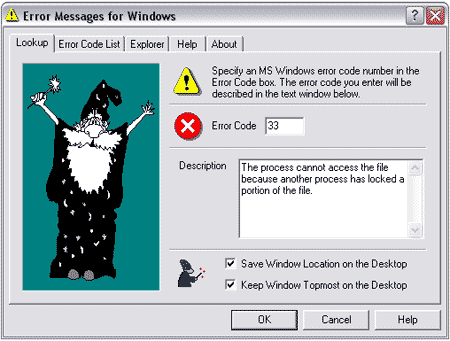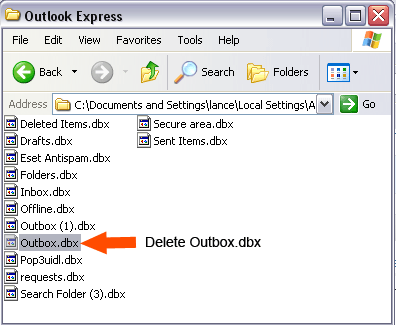What do those Windows Error Codes Mean?: Inevitably, every Windows user is bound to encounter at least a few error codes during their experience with the Windows Operating environment. Wouldn't it be helpful to have a little more information as to why these errors occurred and what they mean? Luckily there is a free program available created by Gregory Braun that can do just that.
The Error Messages for Windows application offers a user the ability to insert an error code number and retrieve a descriptive definition of what the Windows error means. Helping the user to further troubleshoot and diagnose the problem.
Error Messages for Windows example Screenshot:

You can download the Error Messages for Windows tool directly from the Authors Site
Some Example Windows XP Professional Error Codes:
0 The operation completed successfully.
1 Incorrect function.
2 The system cannot find the file specified.
3 The system cannot find the path specified.
4 The system cannot open the file.
5 Access is denied.
6 The handle is invalid.
7 The storage control blocks were destroyed.
8 Not enough storage is available to process this command.
9 The storage control block address is invalid.
10 The environment is incorrect.
11 An attempt was made to load a program with an incorrect format.
12 The access code is invalid.
13 The data is invalid.
14 Not enough storage is available to complete this operation.
15 The system cannot find the drive specified.
16 The directory cannot be removed.
17 The system cannot move the file to a different disk drive.
18 There are no more files.
19 The media is write protected.
20 The system cannot find the device specified.
21 The device is not ready.
22 The device does not recognize the command.
23 Data error (cyclic redundancy check).
24 The program issued a command but the command length is incorrect.
25 The drive cannot locate a specific area or track on the disk.
26 The specified disk or diskette cannot be accessed.
27 The drive cannot find the sector requested.
28 The printer is out of paper.
29 The system cannot write to the specified device.
30 The system cannot read from the specified device.
31 A device attached to the system is not functioning.
32 The process cannot access the file because it is being used by another process.
33 The process cannot access the file because another process has locked a portion of the file.
36 Too many files opened for sharing.
38 Reached the end of the file.
39 The disk is full.
50 The request is not supported.
51 Windows cannot find the network path. Verify that the network path is correct and the destination computer is not busy or turned off. If Windows still cannot find the network path, contact your network administrator.

